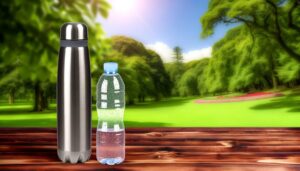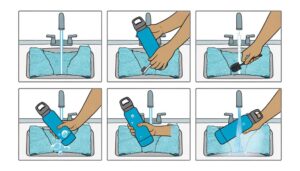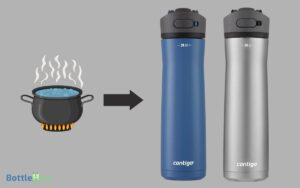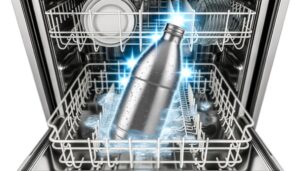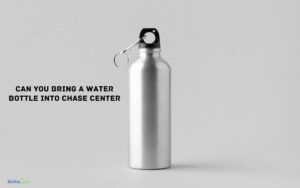Can I Use a Water Bottle as a Neti Pot? A Guide
You can use a water bottle as a makeshift neti pot, but it’s not ideal. Unlike neti pots, water bottles don’t offer controlled saline flow or ergonomic design, increasing the risk of uneven irrigation and introducing contaminants.
Squeezing a bottle too hard could lead to nasal passage damage or improper cleansing. To mitigate risks, use a sterile, squeezable bottle with a narrow tip, fill it with isotonic saline made from distilled or boiled water, and maintain strict hygiene practices.
By understanding these critical details, you’ll appreciate why neti pots provide superior safety and efficacy for nasal irrigation.
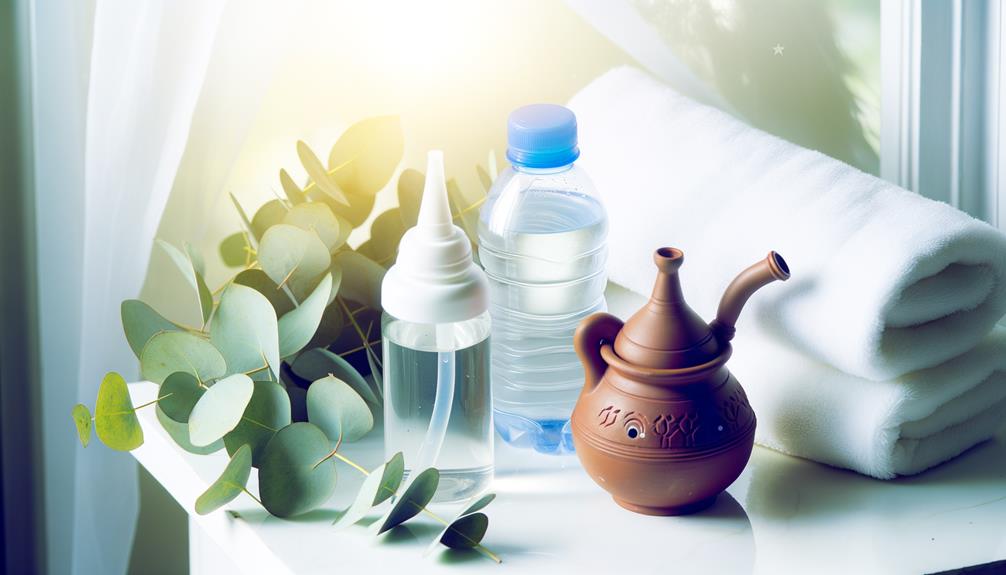
Key Takeaways
- A sterile, squeezable water bottle can be used for nasal irrigation if a proper technique is followed.
- Ensure the water bottle has a narrow tip for controlled flow and minimal nasal passage irritation.
- Use distilled or previously boiled water to avoid introducing harmful pathogens during irrigation.
- Mixing an isotonic saline solution is crucial to prevent nasal irritation and maintain comfort.
Understanding Nasal Irrigation
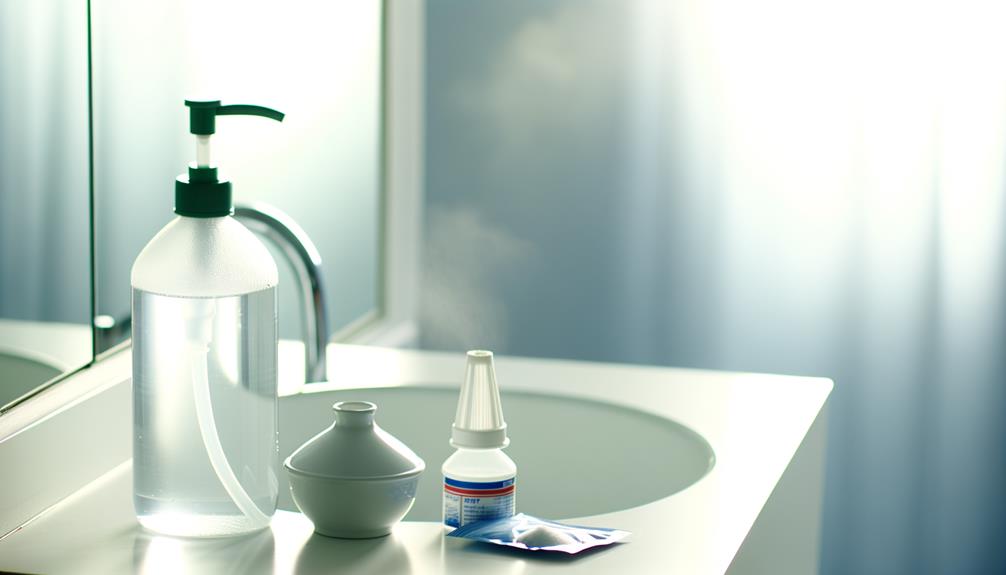
Nasal irrigation, a clinical technique for cleansing the nasal passages, involves flushing out mucus and debris to alleviate sinus congestion and improve respiratory function.
By using a saline solution, you can reduce inflammation and remove allergens, bacteria, and other irritants. This process not only enhances mucociliary clearance but also promotes the overall health of your nasal cavity.
Proper technique is essential; you need to tilt your head and carefully pour the solution into one nostril, allowing it to flow out the other.
Consistent nasal irrigation can lead to significant improvements in symptoms of sinusitis, allergic rhinitis, and other respiratory conditions.
Understanding this procedure guarantees you can effectively manage nasal health and enjoy better breathing.
Comparing Neti Pots and Water Bottles
When considering nasal irrigation tools, it’s crucial to understand the functional differences between traditional neti pots and repurposed water bottles.
Neti pots are specifically designed with a spout that facilitates controlled saline flow into the nasal cavity, minimizing discomfort and ensuring effective cleansing. They often incorporate ergonomic designs to maintain ideal head positioning.
Conversely, water bottles lack these specialized features. The absence of a spout can lead to uneven saline distribution and potential mucosal irritation. Additionally, the pressure exerted by squeezing a water bottle can be inconsistent, increasing the risk of introducing contaminants if the bottle isn’t sterile.
While water bottles can serve as makeshift alternatives, they don’t provide the same precision and safety as neti pots in nasal irrigation.
How to Use a Water Bottle
To effectively use a water bottle for nasal irrigation, start by selecting a sterile, squeezable bottle with a narrow tip. Fill the bottle with a saline solution—preferably isotonic to match your body’s natural salinity. Tilt your head sideways over a sink and gently insert the tip into one nostril. Squeeze the bottle to allow the solution to flow through your nasal passages and exit the opposite nostril. Repeat on the other side.
| Step | Action |
|---|---|
| 1 | Select a sterile, squeezable water bottle |
| 2 | Fill with saline solution |
| 3 | Tilt head over sink |
| 4 | Squeeze bottle to irrigate nasal passages |
This method is efficient for clearing nasal congestion and maintaining sinus health.
Potential Risks and Precautions
Before using a water bottle as a neti pot, be aware of potential risks such as infection from non-sterile water, nasal irritation, and improper usage.
Using non-sterile or tap water can introduce harmful pathogens like Naegleria fowleri, leading to severe infections.
Nasal tissue is sensitive, and using an incorrect saline concentration can cause irritation or a burning sensation.
Improper angle or pressure while rinsing can lead to discomfort or even damage to nasal passages.
Always make certain the water bottle is thoroughly cleaned and sanitized before each use.
Opt for distilled or previously boiled water to mitigate infection risks.
Understanding these precautions is essential for safe and effective nasal irrigation.
Tips for Effective Nasal Rinsing
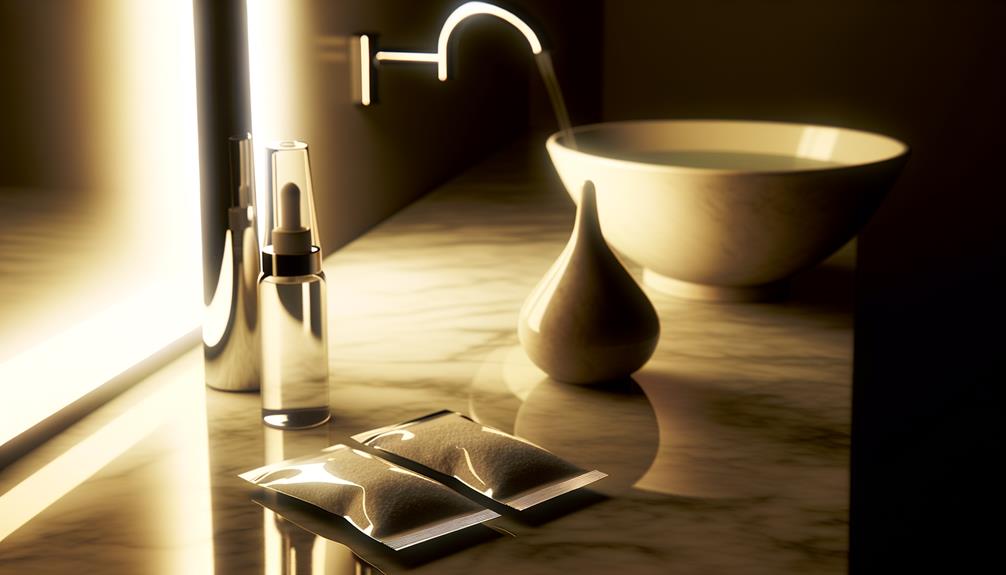
Make certain the saline solution is isotonic to avoid mucosal irritation and maximize the effectiveness of your nasal rinse.
Use distilled, sterile, or previously boiled water to prevent infections.
Mix 1 teaspoon of non-iodized salt and 1/2 teaspoon of baking soda in 1 liter of water.
Before starting, wash your hands thoroughly.
Tilt your head forward and to the side, inserting the water bottle tip gently into the upper nostril.
Squeeze the bottle slowly, allowing the solution to flow through your nasal passages and out the opposite nostril.
Repeat on the other side.
After rinsing, blow your nose gently to clear residual solution.
Clean the water bottle after each use to maintain hygiene and prevent contamination.
Conclusion
In a pinch, you can transform an ordinary water bottle into a makeshift neti pot, but it’s akin to using a garden hose to water delicate orchids. While you might achieve temporary relief, the risk of contamination and improper saline distribution skyrockets. Moreover, most water bottles aren’t designed for controlled nasal irrigation, making it difficult to achieve the right pressure and flow. If you’re considering this method while traveling, remember that venue restrictions may apply— for instance, if you try to bring water bottle Yankee Stadium for a DIY rinse, security might not be too understanding. A proper neti pot or saline spray remains the safer and more effective choice for sinus relief. Additionally, repurposing a bottle for nasal irrigation isn’t just a sanitation gamble—it can also lead to discomfort or even injury if the pressure is too high. Instead of taking risks with your sinuses, it’s better to use that creativity for something less hazardous, like building a diy water bottle greenhouse to nurture seedlings. Prioritizing safety and proper tools will always yield better results, whether for personal health or sustainable gardening projects.
Stick with a sterilized neti pot designed for precise nasal irrigation to avoid turning your sinuses into a bacterial playground. For best results, adhere to clinical guidelines and prioritize safety over convenience.

